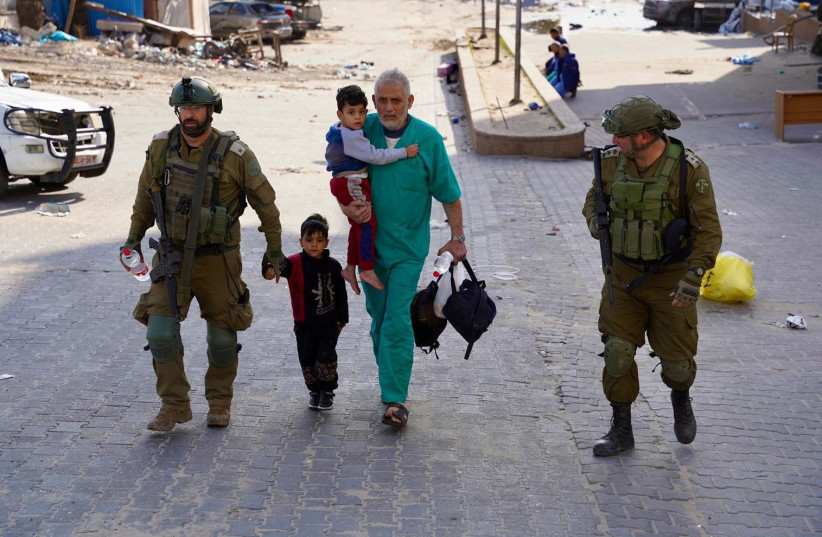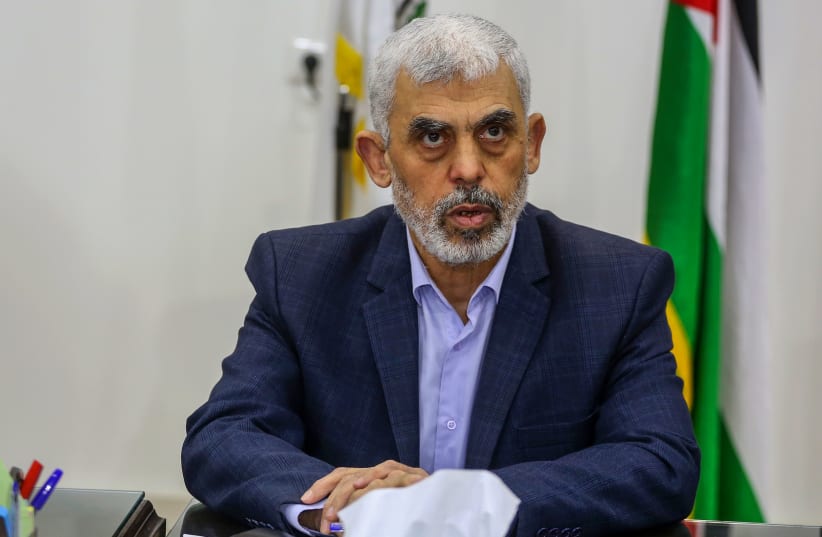Although aspects of running Gaza can be propped up shortly, finding a full solution to replacing Hamas as the Strip’s ruler will not work until Gaza chief Yahya Sinwar is dead, say IDF sources.
The current Israeli plan to replace Hamas with local clans can potentially eventually work on a limited neighborhood-by-neighborhood basis, but to reunite Gaza back together into a functioning fabric, Gazans will need to be convinced that Hamas cannot return by Sinwar’s removal.
IDF sources suggested that even Fatah-affiliated Gazans are still worried about their safety in the future should they cooperate with Israel. Further, when the IDF allows Palestinians to start rebuilding parts of Gaza or facilitates Palestinian drivers of humanitarian aid to parts of Gaza, it cannot fully guarantee that some of these Palestinians might have links or sympathies to Hamas – only that they are unarmed and not an immediate threat per se.
Plans that pretend that there are large groups of Gazans who already feel free of Hamas are ignoring the current realities, say IDF sources.

Replacing UNRWA with the World Food Program
One example of a major change that could still take place even while Sinwar still lives is the replacement of UNRWA as the main humanitarian aid organization in Gaza.
Already the World Food Programme has taken over around 50% of food deliveries in Gaza, and the IDF says it can take on an even larger and decisive role in food security in the future.
The IDF views the UN and the West as needing to decide UNRWA’s fate, but if more IDF officials were split earlier in the war, following UNRWA’s counter-attack on IDF soldiers in a recent report, there is now more consensus to go full throttle to try to convince the international community that UNRWA is replaceable.
For example, there are expectations that the WFP will be bringing food to northern Gaza, the area where food security is most problematic, soon. Also, the UN has moved $300 million in food purchases to the WFP for the future.
Besides the WFP, the IDF said there are a variety of other organizations that can replace different aspects of what UNRWA has done in Gaza, such as World Central Kitchen, KfW, Japan International Cooperation Agency, UNMAS, and USAID.
Despite these possibilities and despite the significant proof the IDF has brought of UNRWA employees’ involvement with Hamas, there are concerns in the IDF that much of the world is getting ready to return to supporting the organization after some weeks where its fate was more in limbo.
Part of the issue is the Western perception, which the IDF says is wrong, of an ongoing famine in Gaza. According to the IDF, Gaza should no longer be analyzed as one unit, but much like it has been separated for military purposes, the humanitarian picture should also be assessed by region, and even based on smaller local areas.
The IDF says the food and medical centers situation in central Gaza, where there are around 500,000 Gazans, is mainly stable, even though they’re not at normal levels.
In contrast, in southern Gaza areas (besides Rafah, which has not yet been invaded) the food situation and medical centers situation are more challenging, but the IDF says that it is already improving following the main fighting in those areas concluding in early February. Rafah is also relatively stable, though overwhelmed in terms of volume, and certainly, the food situation is not at normal levels.
Between Rafah and the rest of southern Gaza, there are 1.4 million Palestinians. The harshest situation is for 300,000 Palestinians in northern Gaza, where handing out food is still sometimes being disrupted by Hamas or, for two weeks in February, by Israeli protesters.
Moreover, the medical centers’ situation in northern Gaza is also currently severely limited to providing first aid. The IDF did not have new details about the US efforts to bring in maritime aid. However, the IDF has plans to facilitate the delivery of maritime aid, even as those plans are still developing. To date, the IDF says it has facilitated humanitarian aid from third parties to Palestinian civilians containing 198,000 tons of food, 29,500 tons of water, and 16,000 trucks from the various crossings.
The IDF also provided updated statistics on the volume of humanitarian aid trucks that have come into Gaza. Starting from October 21, from the Nitzana crossing there were 241 trucks for the rest of that month. In November, from Nitzana there were 2,615 trucks. Next, in December, from Nitzana there were 2,479 trucks, and from the Kerem Shalom crossing, there were 810 trucks, starting from December 12.
For January, from Nitzana there were 2,423 trucks, and from Kerem Shalom 2,614 trucks. Finally, for February, from Nitzana there were 1,039 trucks and from Kerem Shalom, there were 1,941 trucks, a drop of 40%, which the IDF blamed on a mix of UN withdrawals, due to concerns of violence as well as Israeli protesters hampering transfers over two weeks.
The IDF said it had overcome the challenging weeks in February and was looking to exceed previous monthly averages in March. Meanwhile, in the North, IAF jets attacked Hezbollah terror infrastructure and military structures in the Ayta ash Shab and Nakoura areas of southern Lebanon, the military said on Monday night.
IDF tanks and artillery conducted additional strikes in the Ayta ash Shab area. Earlier Monday, the IDF attacked Hezbollah military sites in southern Lebanon in the Jibbain region. Overnight between Sunday and Monday, another military site was struck in the Taybeh region in Lebanon.
Two aerial targets were identified that crossed from Lebanese territory to Israeli territory and fell into the northern Golan Heights, following sirens that sounded regarding a hostile aircraft infiltration in the northern Golan area.On Monday morning, hostile aircraft intrusion alarms sounded in the North.
Hezbollah said on Monday it had launched a multi-drone attack on an Israeli air defense outpost across the border in the Golan Heights.
It said the rare attack, in which it deployed four drones, hit its target with “accuracy” in what it said was another operation in support of Palestinian terrorist groups in Gaza. In contrast, the IDF said two hostile objects had fallen in open areas in Israeli territory, causing no damage or injuries.
Jerusalem Post Staff and Reuters contributed to this report.
